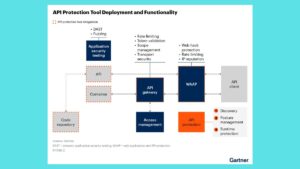Key Concerns for HR Managers in an Organizational Restructure

Organizational restructuring is a complex process that can significantly impact every facet of a business. Whether it’s due to mergers, acquisitions, downsizing, or strategic realignment, HR managers play a critical role in ensuring that the transition is smooth and that employees remain engaged and motivated. Here are some key concerns HR managers must address during an organizational restructure to mitigate risks and facilitate a successful transformation.
1. Communication and Transparency
Keep Employees Informed:
Effective communication is crucial during a restructure. HR managers need to ensure that employees are kept informed about the changes, the reasons behind them, and how they will impact the organization. Transparency helps in reducing uncertainty and building trust.
Key Actions:
- Regular Updates: Provide frequent updates through meetings, emails, or internal communications.
- Clear Messaging: Clearly articulate the goals of the restructure and how it aligns with the organization’s strategy.
- Feedback Channels: Establish channels for employees to ask questions and express concerns.
Example:
- Town Hall Meetings: Hold regular town hall meetings to address employee concerns and provide updates on the restructuring process.
2. Employee Morale and Engagement
Address Uncertainty and Anxiety:
Restructuring often leads to uncertainty and anxiety among employees. HR managers must focus on maintaining morale and engagement to prevent a decline in productivity and motivation.
Key Actions:
- Support Programs: Offer counseling and support programs to help employees cope with the changes.
- Recognition and Encouragement: Recognize and reward employees for their adaptability and contributions during the transition.
- Involvement Opportunities: Involve employees in the planning and implementation phases to give them a sense of ownership.
Example:
- Employee Assistance Programs (EAPs): Provide access to EAPs that offer psychological support and career counseling.
3. Talent Management and Redeployment
Optimize Talent Utilization:
Restructuring can lead to changes in roles and responsibilities. HR managers need to focus on talent management and redeployment to ensure that employees are effectively utilized in new or adjusted roles.
Key Actions:
- Skills Assessment: Conduct skills assessments to identify employees’ strengths and match them to new roles.
- Training and Development: Provide training and development opportunities to help employees adapt to new roles or technologies.
- Redeployment Plans: Develop clear redeployment plans for affected employees, including potential new roles within the organization.
Example:
- Internal Job Fairs: Organize internal job fairs or workshops to help employees find new opportunities within the organization.
4. Legal and Compliance Issues
Navigate Legal Challenges:
Restructuring can bring about legal and compliance issues, including employment laws, severance packages, and potential disputes. HR managers must ensure that all aspects of the restructuring comply with legal requirements.
Key Actions:
- Consult Legal Advisors: Work closely with legal advisors to ensure compliance with labor laws and regulations.
- Document Changes: Properly document all changes related to employment contracts, severance packages, and compensation.
- Review Policies: Review and update HR policies and procedures to reflect the changes resulting from the restructure.
Example:
- Legal Compliance Audits: Conduct audits to ensure that all restructuring actions are in compliance with employment laws and regulations.
5. Change Management and Integration
Manage the Transition:
Effective change management is essential for ensuring that the restructure is implemented smoothly and that the organization integrates new structures and processes successfully.
Key Actions:
- Change Management Plan: Develop a comprehensive change management plan that includes timelines, milestones, and responsibilities.
- Training and Support: Provide training and support to help employees adapt to new systems, processes, and organizational structures.
- Monitor and Adjust: Continuously monitor the progress of the restructure and make adjustments as needed to address any issues or challenges.
Example:
- Change Champions: Identify and train change champions within the organization to help support and advocate for the restructuring process.
6. Cultural and Organizational Alignment
Preserve Organizational Culture:
Restructuring can impact the organizational culture and employee experience. HR managers need to focus on preserving and aligning the organizational culture with the new structure.
Key Actions:
- Cultural Assessment: Assess the impact of the restructure on organizational culture and employee values.
- Reinforce Values: Reinforce the organization’s core values and ensure they are reflected in the new structure and processes.
- Cultural Integration: Facilitate activities and initiatives that promote cultural integration and cohesion among employees.
Example:
- Culture Workshops: Conduct workshops or team-building activities to help employees adapt to the new organizational culture.
7. Impact on Customer Service and Business Operations
Minimize Disruption:
A restructure can impact customer service and business operations. HR managers need to work closely with other departments to minimize disruptions and ensure continuity of service.
Key Actions:
- Operational Planning: Collaborate with operational teams to develop contingency plans and ensure that key business functions remain unaffected.
- Customer Communication: Communicate with customers about any potential changes or impacts and reassure them of continued service quality.
- Resource Allocation: Ensure that adequate resources are allocated to maintain business operations and customer service during the transition.
Example:
- Customer Support Teams: Strengthen customer support teams to handle any inquiries or issues that may arise during the restructuring process.
Conclusion
Organizational restructuring is a challenging process that requires careful planning and execution. HR managers play a vital role in addressing key concerns such as communication, employee morale, talent management, legal compliance, change management, cultural alignment, and operational impact. By proactively addressing these concerns and implementing effective strategies, HR managers can help ensure a smooth transition and set the stage for a successful and resilient organization.







